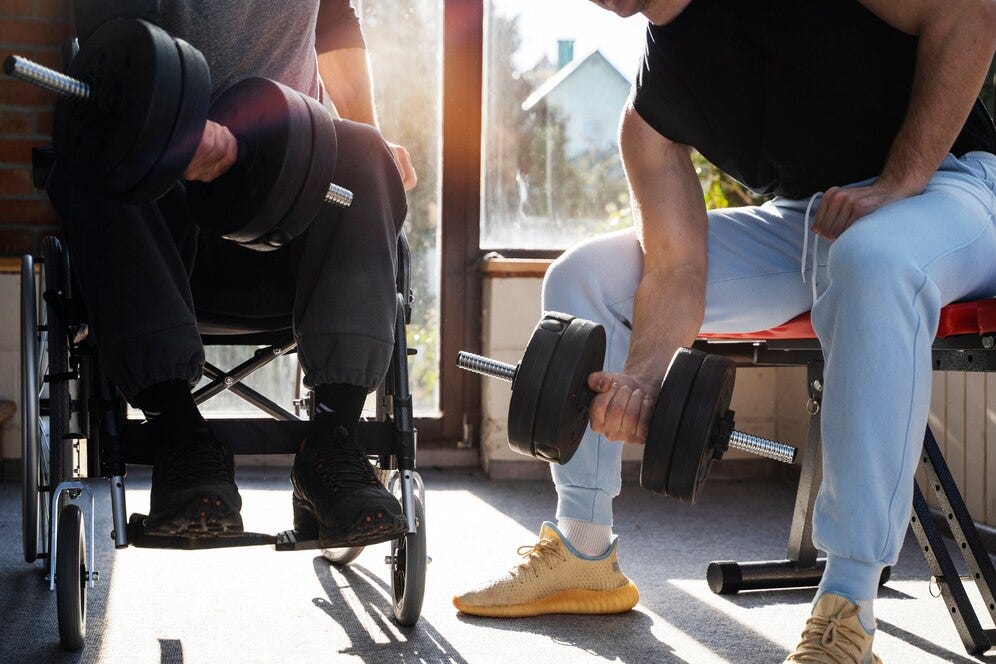The Importance Of Disability Fitness Training In Promoting Health And Independence
Disability Fitness training is essential for people with disabilities because it helps them become more assertive, feel better mentally, and be more independent. Training makes exercise more accessible and adjusts to different needs, focusing on assisting people to feel more confident. By recognising its importance, we can see how it improves overall health and gives people with disabilities greater control over their lives.
Building Physical Resilience
Fitness programs for people with disabilities are about more than just working out—they help people feel stronger and more able to handle challenges. They strengthen the body, lower the chance of health problems, and improve how well someone can move. Disability fitness training plays a key role in promoting overall well-being.
Strength Development
Special exercises help build muscle, compensate for physical challenges, and make everyday tasks easier. Using weights and adapted workouts creates steadiness, which leads to better control and more confidence.
Enhanced Mobility
Personalized fitness plans make muscles and joints healthier, reducing tightness and increasing how far someone can move. It makes moving around easier and lowers the risk of getting hurt or having other issues over time.
Chronic Illness Prevention
Staying active lowers the chance of problems like being overweight, heart trouble, and diabetes. For people with disabilities, keeping up with a fitness plan is crucial for staying healthy in the long run.
Supporting Mental Well-Being
The influence of disability fitness training, much more than physical impact, also affects mental health: emotional spills, self-esteem boosters, and stress management.
Boosted Confidence
Achieving the fitness milestone creates a sense of achievement, which works as fuel for self-belief. Challenges in the workout place encourage people to deal with obstacles in life.
Stress Reduction
Endorphins, natural stress-relieving hormones, are released when the body becomes physically active. For example, a physically impaired person may engage in fitness training as therapy or as an escape from daily frustrations.
Social Engagement
Fitness or private training groups can be more easily formed with individuals from these activities, thereby increasing participation, discouraging isolation, and emphasizing the need for social inclusion. Being comfortable in a community generally contributes more to emotional wellness.
Fostering Independence
Fitness training imparts the tools for living more independently, breaking the reliance on others for even the most minor tasks and forming the foundation for independence.
Daily Living skills
The greater the enhancement of strength and mobility, the more easily everyday activities will be performed- from dressing to cooking to getting to and from work. What fitness training is about is real-world functionality.
Adaptive Techniques
Programs specialized for specific disabilities teach participants new and unique ways of tackling physical challenges so they can easily navigate their environments.
Long-Term Autonomy
A robust and healthy body lowers the risk of injuries and dependence. Regular training prepares the individual for independence and minimizes the need for help from outside sources.
Conclusion
Disability fitness training forms the foundation of health and independence, providing physical vitality, mental resilience, and an eventual avenue toward self-sufficiency. By trying out specific fitness programs, people with disabilities can maximize their potential to gain better health and an increased sense of empowerment and independence. This transformation beautifully manifests the indisputable value of fitness in creating a better and more inclusive tomorrow for everyone.




